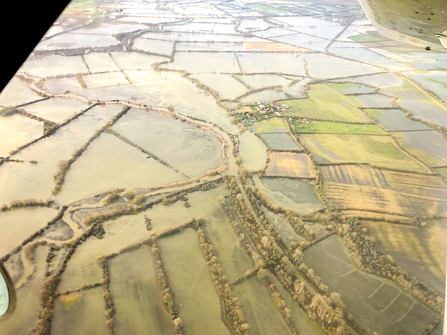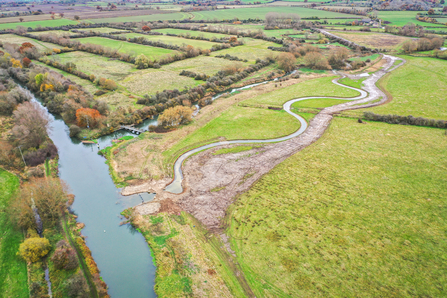A DRAMATIC aerial photo of hundreds of acres of farmland and countryside in flood shows how the Thames floodplain can store water to help people and wildlife, and tackle the effects of climate change.
The picture, taken by BBOWT supporter Rob Sadler on Sunday, shows land in West Oxfordshire inundated by recent floods, including the Trust's 760-acre Chimney Meadows Nature Reserve.
The fields flood after heavy rain as they have done for centuries: this benefits a wide range of wildlife such as wetland birds, but also helps people by slowing and storing flood water that could otherwise cause more damage to villages, towns and cities downstream.


